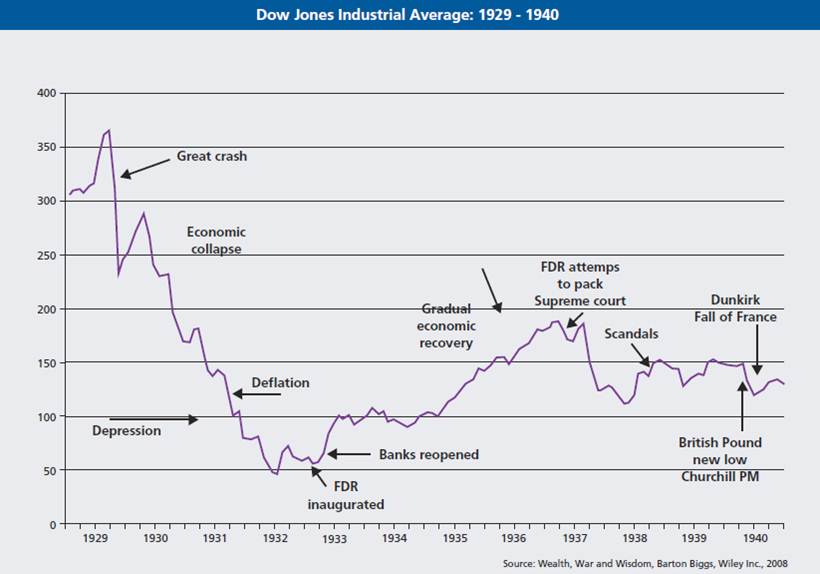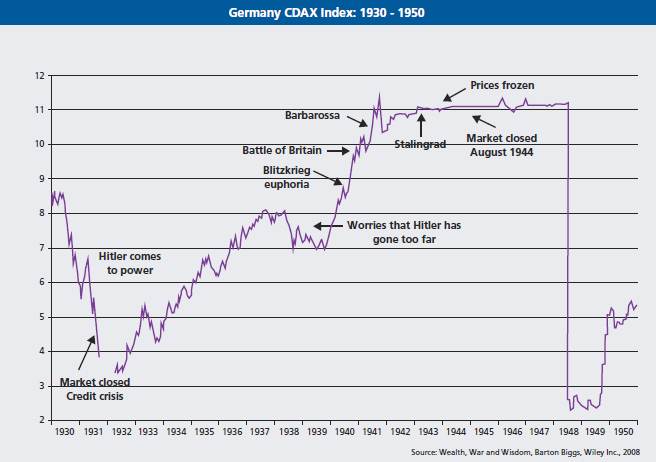“Stock Markets during the second World War”
Snippets from THIS short article…
“In occupied Europe during World War II, all things considered, gold was the best asset to hide in, preserve wealth, and maintain some liquidity. Stocks, land, real estate, and businesses worked only if you had a very long-tern horizon. The black market was the most lucrative profession.”
Barton Biggs was probaly one of the finest mind on Wall Street. As an investment srategist, he had great respect for markets and their many pitfalls, and he never succumbed to the “doom and gloom” syndrom or to the “madness of crowds” trap.
In his book “Wealth, War and Wisdom”, Barton Biggs analyses equity markets behavior during the key events of World War II; and the results are truly fascinating, as you can see in the charts below:
Dow Jones Industrial Average: 1929 – 1940

“(…) the bottom of a bear market by definition has to be the point of maximum bearishness, and from that point, the news doesn’t actually have to be good, it just has to be less bad than what has already been discounted in prices.”

“In late 1939, however, well ahead of the Blitzkrieg stock prices began to anticipate the overwhelming victories of 1940.”



























